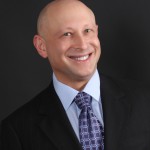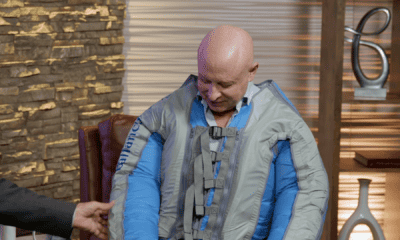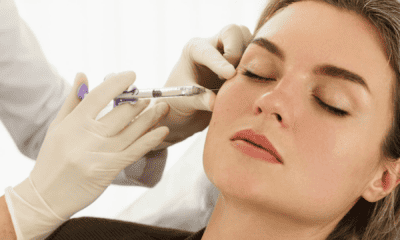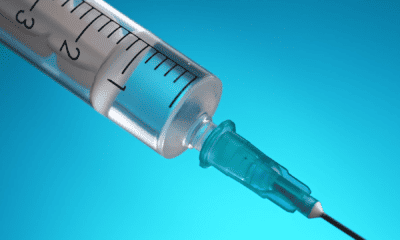At some point, we all take a look in the mirror and see the lines, wrinkles, and loosening skin that finally tolls the bell that we have begun to age. In particular, loose, aged skin is the most obvious sign that the aging process has begun. Unlike with fine lines and wrinkles, features of aging that can be quickly and effectively taken care of by Botox and fillers, loose skin is a difficult issue to treat without surgical intervention. While a facelift and/or neck lift remain truly powerful procedures that achieve facial rejuvenation, many patients who first notice the signs of loose skin simply aren’t ready for major surgery, nor do they often desire the idea of any surgery.
This is where energy steps in. In order to successful tighten skin without removing it (surgery), it will need to be “shrunk.” This is the realm of energy-based, non-surgical devices that impart energy into the skin to cause contraction. The technology is nothing particularly new, but it’s efficacy in the last few years has skyrocketed, allowing many patients who would have only been helped by surgery see significant results with non-surgical devices. On the latest PSC Round Table, two of the world’s leading experts on energy devices for facial rejuvenation, board certified plastic surgeons Dr. Barry DiBernardo of New Jersey and Dr. Jason Pozner of Boca Raton, discuss the latest in skin tightening devices with their colleague, Dr. Bruce Van Natta of Indianapolis.
Understanding the Skin Tightening Process
For much of cosmetic surgery’s history, loose skin could only be addressed by surgery. The reasons for this has to do with the state of the skin. Over time, skin stretches out and becomes “larger” than it used to be. Another way to describe this change is the skin slowly losing its elasticity, just like a rubber band. If you stretch out a rubber band continually over time, eventually it will no longer snap back to its original size. If you wanted to make that stretched rubber band the same size as it once was, the only option would be to cut out the excess material and then stitch the loose ends back together. This is what a surgical facelift seeks to accomplish with loose skin.
Let’s take that same rubber band and return it to its original shape without cutting. The only possibility in this situation is to impart some measure of energy into the rubber band that causes it to contract and become smaller. This is what energy devices seek to do. “When we talk about tightening, the historic method was surgery – like a facelift, like a neck lift,” shares DiBernardo. “Today, the technology – particularity the radiofrequency technology – has gotten so good we can do tightening with little pokes under the skin, do this in 30 minutes in the office, and with local anesthesia.”
The excitement surrounding non-surgical energy devices for skin tightening is palpable. As noted by DiBernardo, it’s not just about how effective the treatment is in tightening the skin, but the whole process for the patient. Surgery is more involved, more expensive, and requires general anesthesia. That is a situation that folks in their middling years may want to avoid, if they can, or maybe their concerns about aged facial skin simply aren’t concerning enough to jump for surgery. With energy devices, however, many of that same group may listen intently to the offerings of a local anesthesia procedure in an office with little to no downtime. “This is for people who are not yet ready for a facelift,” reiterates Dr. Pozner. “You want a little something, but you’re not yet ready to go under the knife.”
How Do These Devices Work?
Since contraction is the name of the game, these non-surgical devices utilize energy directed into the tissue to cause the skin to contract. An oft-used analogy is when you cook chicken in a saute pan. When you add the meat to the hot pan (a pan full of energy), the chicken breast will immediately begin to contract. This is due to the addition of the energy, or heat of the pan, causing the tissues to tighten up. Likewise, the non-surgical devices add their specific energy source to specific tissues to cause contraction, or skin tightening.
One of the more successful forms of energy utilized is radiofrequency. Surgeons use the device’s electrodes either below or above the skin to “inject” the energy that causes tightening. In another application, radiofrequency energy can be applied with microneedling to boost the turnover of new and healthy skin cells, leading to improved skin texture. All of these procedures can be done in an office with local anesthesia, an extremely attractive prospect for many would-be patients. “A lot of the time, if we’re doing something else under general, like a breast augmentation or tummy tuck, sure, we’ll do something to your neck, but most patients we do are under local anesthesia,” shares Dr. Pozner. “We give them a little bit of sedation drugs, maybe Pro-Nox or Ativan, put the anesthetic in, then, after that, they don’t feel anything!”
Successful Skin Tightening Completes the Array of Non-Surgical Tools for Facial Rejuvenation
The excitement surrounding non-surgical skin tightening procedures being successful is due to it being the final frontier in non-surgical facial rejuvenation. Wrinkles and fine lines have deftly been cornered and treated by Botox and fillers, color and textural irregularities are handled by an array of modern lasers, and great, medical skin care works to bring it all together. The missing piece is a method of non-surgical skin tightening, and the experts believe we have finally made it to where the devices are truly successful in what they seek to achieve.



















Facebook
Twitter
Instagram
YouTube
RSS